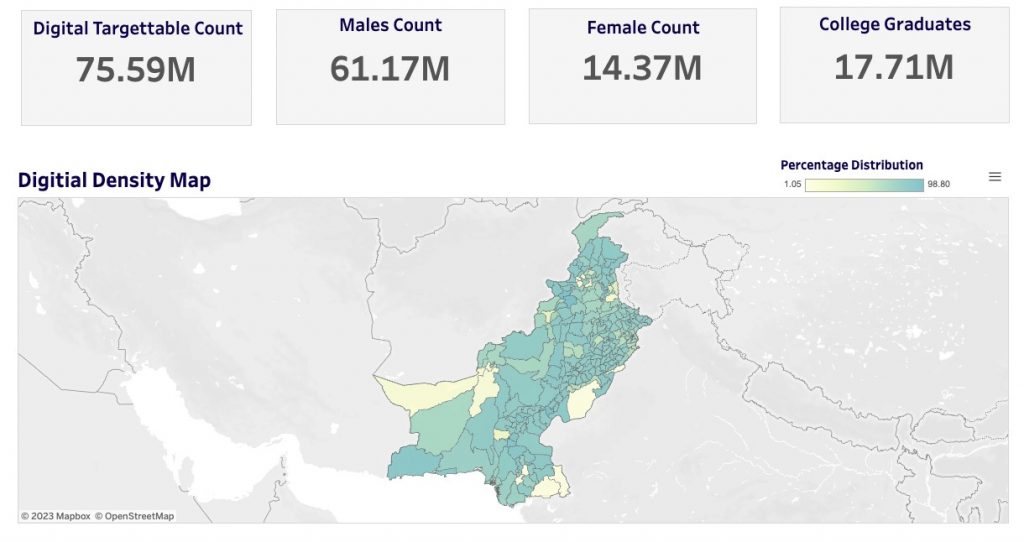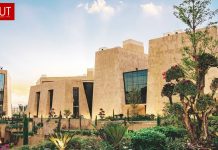By M.Yasir
In the first study on political advertising, Allama Iqbal Open University researchers analyzed the appeals, themes, and opponent attacks the leading political parties used.
According to the 2020 study, PPP used the content of its past performance together with themes such as roti (bread), kapra (clothes), and makan (home) in its political advertisements.
Pakistan Muslim League-Nawaz (PML-N) used fear appeal, past performance, and sanctity of vote in addition to other mixed themes.
Besides employing the opponent attack strategy, PTI used its past performance, health, education, corruption, and hope appeal in its advertisements.
The study found that all three parties directed these appeals, themes, and opponent attacks using out-of-home advertising and the leading English and Urdu newspapers such as Dawn, The News, Daily Express, and Daily Nawa-i-Waqt.

The researchers recommended that the political parties focus more on presenting solutions to the problems confronted by the people while concentrating more on educating the people about the country’s fundamental issues instead of hoodwinking them through their exaggerated and unrealistic sloganeering.
In the aftermath of the study, Imran and the PTI led the nation towards economic disaster and were ousted by the Pakistan Democratic Movement. With a coalition of the opposition in charge, trying to salvage the issues of the previous leaders, PML-N and the PPP managed to work together without infighting.
This may be primarily attributed to Maryam Aurungzeb, who served as the Minister for Information and Broadcasting and gained exposure to more data points on how political narrative building has been digitally transformed globally.
Mirroring the lessons of the study, the latest welcome-back campaign from the PML-N is proactive instead of reactive. The campaign appears to put PML-N’s perspective forward, inviting everyone to the Jalsa.
“It’s a fresh take from this ages-old party, which usually operated on newspapers and TV journalists,” said Taimoor Niaz, a WPP media agency executive. “Now, it is taking on and embracing the digital world. PML-N has started to employ contemporary methods of political advertising and media buying. They’re listening and understanding to the voter using digital mediums and dashboards and modern tech – and responding accordingly with fresh narratives.”
Reasons behind shift
In the aftermath of PTI’s 2018 austerity measures, scores of rent-seeking broadcast media companies were forced to cut the fat. The media supply chain of Pakistan is dependent on government advertising, as revenues from private advertisers have stagnated.
With Geo, ARY, and HUM eating the lion’s share of the Rs. 40 billion spent on TV advertising, Pakistan’s 100+ TV channels need the government to sustain their rent-seeking operating model.
With further austerity measures in successive governments, broadcast media companies faced competition from telcos launching their own OTT apps and reaching audiences directly while monetizing on subscriptions and digital advertising. While the Rs. 80 billion available for advertising has remained the same, the share of digital within it has increased markedly.
The rise of OTT adoption, such as PTVFlix by Pakistan Television Corporation (PTVC), has meant media companies and their regulators have tapped into deeper content consumption insights hidden behind YouTube’s walled gardens.
Integrating these data points with sentiment analysis tools, media companies, and their regulators secured partnerships with Pakistan’s leading satellite teleport provider for comprehensive managed services for channels, OTT providers, and media monitors.
Couple this with industry research on the impactful resonance of clutter-breaking creatives in advertising, it’s not a mystery why the PML-N has shifted its positioning strategy.
“The colossal role of social media in spreading awareness cannot be underestimated, and the PML-N has capitalized on this powerful medium, focusing on using it for positive purposes while adhering to the party’s guidelines,” said Taher Altaf Khan, an advertising executive. “The party has consistently aimed to spread the message of PML-N to every citizen of Pakistan voluntarily, prioritizing authenticity over false news.”
He said that PML-N’s has evolved into a formidable force in the digital realm.
“What was once a party reliant on traditional advertising has now embraced the power of social media,” he said. “Their commitment to authenticity and spreading their message has won them a prominent place in the digital landscape.”
Media strategists paving the way
Maryam Aurangzeb, the former Federal Minister for Information and Broadcasting, stands at the forefront of this digital transformation. Khan said her strategic insight and leadership have been instrumental in ushering in a new era of digital engagement for the party.
Under her guidance, PML-N has excelled in tactical media buying, ensuring a dominant presence on Twitter panels and other digital platforms. This strategic move has amplified their message and consolidated their position as a formidable force in the online political arena.
It would appear that Maryam’s approach also includes hyper-targeted campaigns, ensuring the party’s message resonates with specific demographics. This precision in communication strategy has significantly enhanced the party’s engagement with its audience.
During her tenure, the party has secured innovative partnerships, including collaborations with non-traditional outreach channels for short-form videos. These have expanded PML-N’s reach, allowing the party to resonate with newer audiences and extend its influence beyond traditional boundaries.
PDM’s initiatives targeted towards Central Punjab had awareness campaigns being executed on Kuaishou’s Snack Video, a short video platform with 50%+ of its audience in Central Punjab, a region expected to be the hottest contested area in the upcoming elections.
“PML-N’s adoption of artificial intelligence tools for content generation has set a new benchmark in modernizing the party’s narrative distribution strategy, enhancing its digital presence,” said Khan. “Collaboration with prominent and micro-influencers has been a fundamental strategy to broaden the party’s reach, creating a ripple effect and extending the party’s message to diverse audiences and demographics.”
The diverse content strategies, from long-form videos to short snippets, have enriched the party’s digital narrative, making it more engaging and informative.
“Maryam’s strategies have also played a crucial role in presenting the finance ministry case with a lens of transparency and clarity, bridging the gap between the government and the public through data-driven and educated talking points,” said Khan.
Future Outlook
Just as PTI took the lead in 2013 and 2018 with a media strategy that broke new ground with digital media, the PML-N can unlearn its old ways and adopt new ones.
This reflects a global trend where political communication strategies are evolving to meet the demands of the digital age. Aurangzeb’s efforts are commendable and serve as a mirror to the changing face of political engagement worldwide.
For the PPP and PTI to resonate with new and existing voters, media strategists will have to study PML-N’s adaptability and learn how to track digital narratives that will play a central role in political strategy, in line with the guiding principles of senior leaders.






